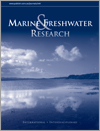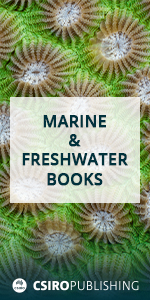Marine and Freshwater Research
Volume 76
Number 13 2025
This article investigated the extent to which environmental flows have been delivered in the upper Murrumbidgee River in southern-eastern Australia from 2005 to 2022. Environmental releases were below the 27-GL annual target in 10 of the 15 years from 2008 to 2022. Opportunities for improvement include setting enforceable targets, ensuring independent scientific oversight and implementing a flow response monitoring program.
Our evaluation of wetland conservation mechanisms in the Commonwealth and three major states in Australia’s Murray–Darling Basin showed implementation challenges across different scales and jurisdictions. For greater consistency and cooperation, we recommend reviewing freshwater conservation policy integration pathways among jurisdictions examined. Setting pragmatic targets and explicit implementation strategies is important for improvement in wetland conservation and effective climate adaptation efforts.
This study investigated the phenotypic variability in otoliths of Mystus vittatus from four different locations along the Ganga River to delineate its probable stocks. Using otolith shape and otolith morphometric analysis, the statistical results showed significant spatial differences in otolith characteristics, suggesting different stocks of Mystus vittatus.
This study examined the global distribution of freshwater shrimps in the genus Macrobrachium, evaluating environmental and historical drivers of species richness across biogeographic realms. Using predictive models, we tested the temperature–speciation, water–energy, and habitat heterogeneity hypotheses. Species richness peaked in the Neotropic and Indo-Malay realms, with model performance varying regionally. Results indicated that combined environmental and historical factors best explain richness patterns. Findings highlighted the need for targeted conservation efforts to protect biodiversity hotspots and mitigate human impacts on freshwater ecosystems.
Carbon dioxide and methane emissions from littoral zones to the atmospheric of small wetlands during the growing season (from May to October) were measured. The mean carbon emission rate was 9.94 ± 0.27 g CO2-eq m−2 day−1, with 18.24 ± 0.40 and 0.26 ± 0.04 g CO2-eq m−2 day−1 of CO2 and CH4 respectively. Wind speed, air temperature and −5-cm soil temperatre have singnificant non-linear relationships with carbon emissions. The small wetlands should be included in greenhouse-gas inventories as an unexpected carbon source.
This article belongs to the collection: Global perspectives: sustainable management of freshwater aquatic ecosystem services and water resources.
This study mapped the seafloor off Simon’s Town in False Bay, South Africa, by using sonar and sediment sampling to identify six distinct seafloor types, from granite outcrops to sand ripples shaped, by currents. It has highlighted the mixing of quartzose and calcareous sediments, illustrating how natural forces shape this dynamic marine environment.





